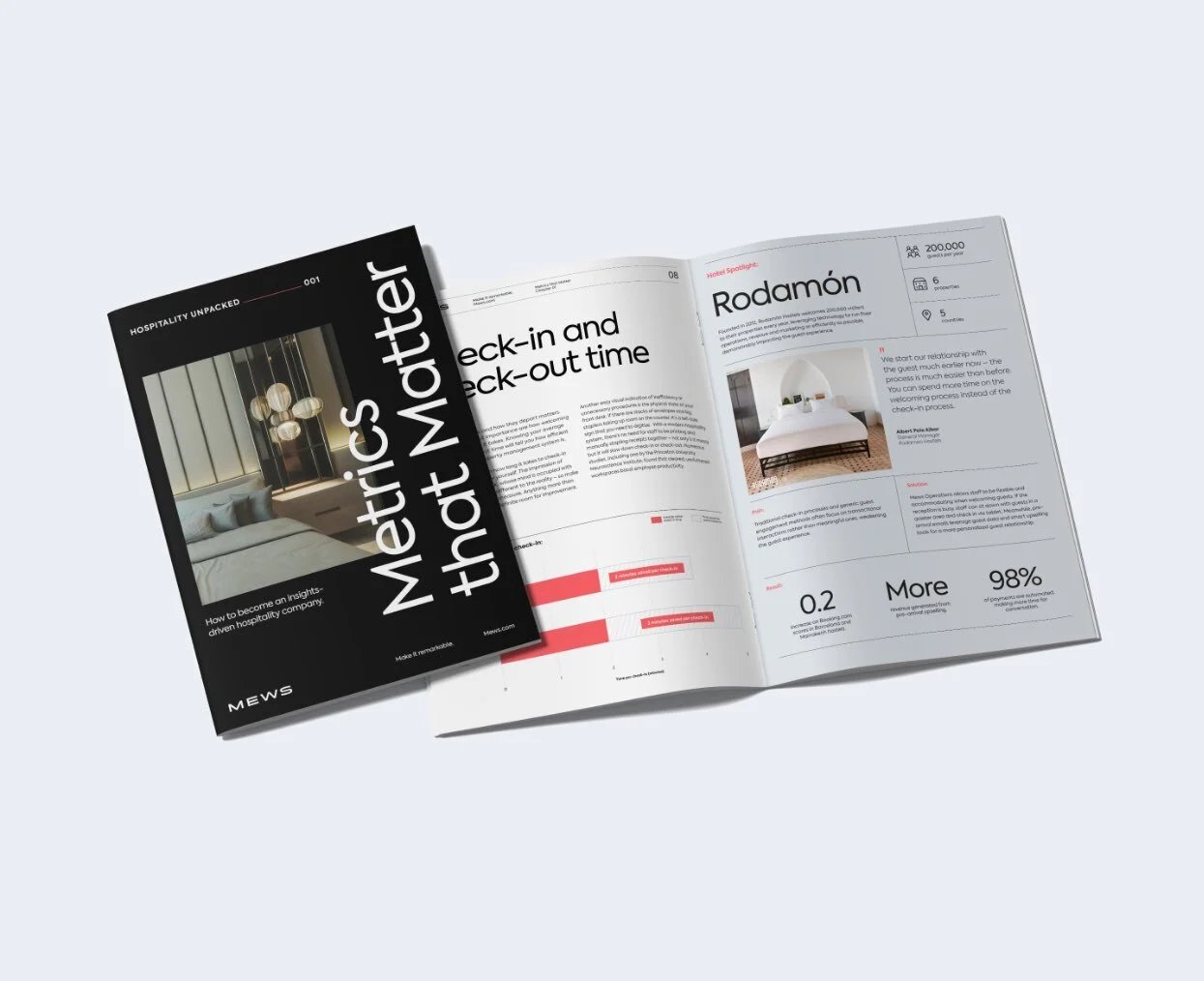Understanding RevPAR vs ADR is important for any hotelier. These key performance indicators are essential for making data-driven decisions that optimize revenue management strategies.
While they are related, RevPAR and ADR are not the same and should not be used interchangeably. ADR measures the average revenue generated per occupied room, while RevPAR assesses the hotel's ability to fill available rooms at the average rate. In essence, ADR provides a partial view of revenue performance, whereas RevPAR offers a more comprehensive picture of overall performance.
In this article, we will explore both metrics in detail and discuss how to effectively use them to stay ahead in the competitive hospitality industry.
Table of contents
What is ADR (Average Daily Rate)?
ADR, or average daily rate, is a key metric used to calculate a hotel’s profitability. It demonstrates the average rate hoteliers can charge for a room during a certain period on any given day. ADR is an important metric because it can help you evaluate how well your pricing strategies are performing, helps you better practice revenue management and maximize the revenue on each room sold, and serves as a point of performance comparison between your hotel and the competition.
ADR in action
ADR is calculated by dividing total room revenue by the number of rooms sold.
ADR = Room revenue / number of rooms sold.
Imagine that your hotel has generated $8,000 in room revenue on a given Saturday. If 40 rooms were occupied that night, the ADR would be 8000/40, or $200 ADR.

What factors influence the ADR of your hotel?
Understanding the factors that influence the Average Daily Rate (ADR) is crucial for optimizing your pricing strategy. Here are some key factors:
Macro or microeconomic situation
Economic conditions play a significant role in determining ADR. For instance, during a recession, disposable income decreases, and people might be less willing to pay high rates for accommodation. On the other hand, a strong economy can support higher rates.
Location
The old adage “location, location, location” holds true. A hotel situated in a prime area, such as in front of a major landmark, or close to the beach, can command higher rates compared to one located in a less desirable, industrial area on the outskirts of town. Guests are generally willing to pay a premium for a prime location.
Target audience
The type of target audience or market segment you aim to attract can influence your ADR. For example, luxury travelers might be willing to pay higher rates compared to budget-conscious guests. Pricing often helps define and attract specific audience segments.
Seasonality
Seasonal variations significantly impact ADR. During peak seasons or high-demand periods, guests are more inclined to accept higher rates. Conversely, during off-peak times, discounts or special offers might be necessary to attract guests.
Special events
Special events, such as conferences or festivals, can drive up demand and, consequently, your ADR. For instance, festivalgoers booking last-minute accommodation might be less sensitive to higher rates due to the urgency of finding a place to stay.

And RevPAR (Revenue per Available Room)?
RevPAR, or Revenue per Available Room is a KPI that helps hoteliers understand how well they are performing. If RevPAR increases, this also means that your ADR, occupancy or both metrics are increasing.
RevPAR in action
RevPAR can be calculated by dividing the total room revenue by the total number of available rooms. It can also be calculated by multiplying the average daily rate by the occupancy rate.
The equations for calculating RevPAR are:
RevPAR = Total Room Revenue / Total Available Rooms
OR
RevPAR = Average Daily Rate (ADR) x Occupancy Rate
Using the same example as above: if your ADR is $200 and 40 out of 80 rooms are occupied that night, that means you have a 50% occupancy rate. 200 x 50% = revenue per available room of $100.
What factors influence the RevPAR of your hotel?
ADR
The more you can charge for your average daily rate, the higher your RevPAR will be. How much you charge on average per day is crucial to earning higher revenue.
Occupancy rate
The higher the occupancy at your hotel, or the more rooms you sell on an average day, the more total revenue you have available to spread out over your available rooms. Occupancy is most effective when combined with a strong ADR.
Demand
Demand is one of the most important factors affecting RevPAR because the more demand there is, the higher your ADR will be and the higher your occupancy rate will be.
Revenue management strategies
Your revenue management strategies significantly influence your RevPAR. For instance, if your strategy focuses on consistently offering the lowest prices to outcompete others, you might see higher occupancy rates. However, this approach could lower your ADR, and negatively affect your RevPAR in the long run. Balancing competitive pricing with maximizing ADR is crucial for optimizing overall revenue performance.
Using a revenue management system can also help automate pricing, forecast demand and optimize both ADR and RevPAR for maximum revenue.
Comparing RevPAR vs ADR
How can RevPAR be used practically?
RevPAR is a valuable metric for assessing how effectively you’re maximizing revenue from your available rooms, allowing you to rework your ADR to generate more revenue.
Practically, RevPAR helps you track the health of your operations over time, identifying trends and fluctuations in demand. This insight enables you to adapt your revenue management strategies to changing market conditions.
In addition, RevPAR can be useful as a benchmarking tool to understand how well you are performing against the competition. If you are outperforming the competition, it's a sign you’re on track. If you’re underperforming, however, you may need to adjust your pricing strategy.
Where RevPAR falls short
While RevPAR is an extremely valuable metric, that doesn’t mean it has no limitations. For instance, it doesn’t consider the hotel’s size or overall profitability. Additionally, a high RevPAR doesn’t always mean you're outperforming the competition, as other factors also influence overall performance.
How ADR is useful
ADR helps analyze how much revenue is being generated per room sold. The better you track it over time, the easier it will be to adapt to seasonality – whether it’s staying consistent, going up or going down. It also allows you to monitor your market position. By combining these important insights, you can refine your revenue management strategy and work towards better results.
ADR doesn’t always provide a full picture
ADR has its limitations; it doesn’t account for unsold rooms (which RevPAR does), or revenue from other ancillary sources like the hotel bar, spa, restaurant, tours, incidentals or amenities. It focuses solely on room-specific revenue, which is just one part of a hotel’s overall financial performance.
Conclusion
We’ve looked at these two KPIs to give you a clearer understanding of revenue generation. While there is no magic formula to ensure high revenue, understanding these metrics will certainly help you refine your strategies to stay ahead of the competition.
Download our guide The Metrics that Matter


2026 Hospitality Industry Outlook
Download now
Table of contents
Hospitality hot takes straight to your inbox



.webp)
